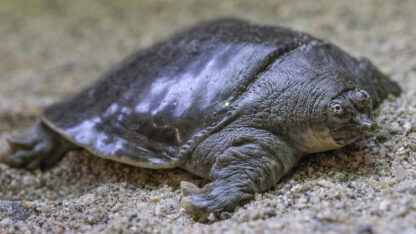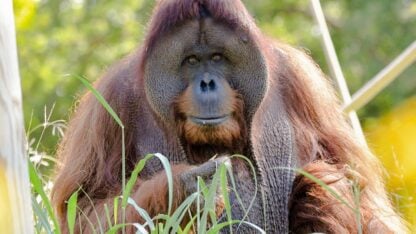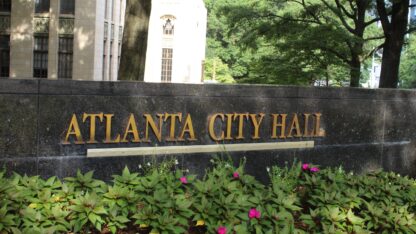Think about bees, and honeybees might be the first to come to mind. But Georgia is home to more than 500 different species of native wild bees, from familiar ones like the common eastern bumblebee, to a species of rarely-seen shimmering green sweat bee that’s identified only once or twice a year in the state.
They live in woods and farm fields. And, according to a recent study by scientists at the University of Georgia, a surprising number of them live in areas where forests and cities meet.
Typically, when humans build things, it’s not great for the wild creatures that might otherwise live there. And that’s what the UGA team expected to find with this project, said Kris Braman, head of UGA’s Department of Entomology.
“There’s been so much work done that says anthropogenic environments — in other words, areas that we have altered — have had negative consequences for insect diversity,” she said. “Our suspicion was that that would be the same for urban bees.”
But that’s not what they found. Over two years of surveys in and around Athens, they identified more than 100 different species of bees, about a fifth of all the species that live in Georgia.
“The more we learn, the more we realize that we really have a lot already going for us in urban environments,” Braman said.
This is in line with what’s become a common theme in ecological research, according to Kennesaw State University professor Clint Penick, who also studies urban insects. He said there’s a growing understanding that cities aren’t separate from nature.
“In fact, they are part of nature. And cities actually support a surprising amount of biodiversity,” he said.
Last year, Penick, who wasn’t involved in the UGA study, found an endangered species of bumblebee in Atlanta, at the Atlanta Botanical Garden.
Penick said it’s not all that surprising that cities, with yards and landscaping full of flowers, would attract pollinators. But this new paper, which was published in the Journal of Insect Conservation, adds a new angle: The researchers found that patches of forest near residential areas improved biodiversity.
“This is something that could contribute to thinking about how we can be more beneficial to nature in the future, not just focusing on planting pollinator gardens, but also protecting forest patches within our cities as well,” he said.
Atlanta’s tree canopy has long been something boosters have boasted of, but the canopy has shrunk in recent years, and the city has struggled to update its tree protection ordinance.
While bee species diversity might not be a great motivator for cities or developers to protect forests, Miriam Edelkind, a UGA a grad student who worked on the study, said what’s good for bees is also good for the animals, like birds, that eat bees, and for the plants that bees pollinate.
“Bees are harbingers of biodiversity,” she said.
Edelkind learned about the great diversity of Georgia bees while working on the research project — she said that in itself was exciting for her. She’d been invited to join the work by another student, Amy Janvier, who’d collected the data for the study during the pandemic, but who died in a car wreck before she could finish the project.
The study authors decided to list Janvier as the lead author on the paper. Braman said they were committed to seeing her work published.
“She was a little force of nature,” Braman said. “Amy’s mother and aunt, in the midst of their grief and in the middle of the pandemic, brought us three carloads of samples, all of these samples, so that her work would not be lost.”
The researchers said cities aren’t across the board great for all bees; some species benefit more from the open spaces of yards than others do. And rising temperatures may pose more risks in urban areas. But these findings suggest that cities aren’t all bad either.
“It can be a complicated picture,” Braman said. “But it’s not an ‘all is lost’ situation by any means.”









